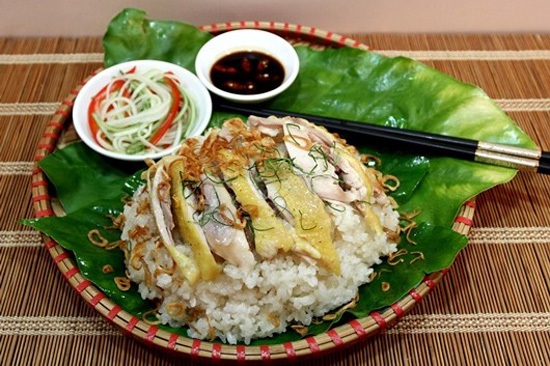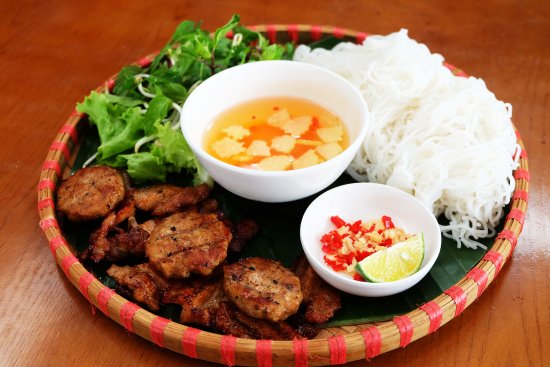Travel Tips
Cuisine
Vietnamese cuisine encompasses the foods and beverages of Vietnam, and features a combination of five fundamental tastes (Vietnamese: ngũ vị) in the overall meal. Each Vietnamese dish has a distinctive flavor which reflects one or more of these elements. Common ingredients include fish sauce, shrimp paste, soy sauce, rice, fresh herbs, fruit and vegetables. Vietnamese recipes use lemongrass, ginger, mint, Vietnamese mint, long coriander, Saigon cinnamon, bird’s eye chili, lime, and Thai basil leaves. Traditional Vietnamese cooking is greatly admired for its fresh ingredients, minimal use of dairy and oil, complementary textures, and reliance on herbs and vegetables. With the balance between fresh herbs and meats and a selective use of spices to reach a fine taste, Vietnamese food is considered one of the healthiest cuisines worldwide.

As the people respect balance rules, Vietnamese cuisine always combines fragrance, taste, and colour. Vietnamese cuisine always has five elements which are known for its balance in each of these features. Many Vietnamese dishes include five fundamental taste senses (ngũ vị): spicy (metal), sour (wood), bitter (fire), salty (water) and sweet (earth), corresponding to five organs (ngũ tạng): gall bladder, small intestine, large intestine, stomach, and urinary bladder.
Vietnamese dishes also include five types of nutrients (ngũ chất): powder, water or liquid, mineral elements, protein and fat. Vietnamese cooks try to have five colours (ngũ sắc): white (metal), green (wood), yellow (earth), red (fire) and black (water) in their dishes.
Dishes in Vietnam appeal to gastronomes via the five senses (năm giác quan): food arrangement attracts eyes, sounds come from crisp ingredients, five spices are detected on the tongue, aromatic ingredients coming mainly from herbs stimulate the nose, and some meals, especially finger food, can be perceived by touching. Whether complex or simple, Vietnamese dishes also offer satisfying mouthfeel during the dining enjoyment.
Pho
What list of Vietnamese cuisine would be started without pho? This simple staple consisting of a salty broth, fresh rice noodles, a sprinkling of herbs and chicken or beef, features predominately in the local diet — and understandably so. It’s cheap, tasty, and widely available at all hours.

Pho has shown its position not only in Vietnamese cuisine but also world cuisine. Pho can be seen everywhere from street stalls to high-end restaurants. Some is served with chicken and some with beef. Each type of meat entails a variety of sub-dishes, from beef tenderloin to beef brisket, chicken wing to chicken thigh. Fresh herbs, clear stock and soft noodles are 3 important factors to making an outstanding Pho.
Price: 50,000 VND – 66,000 VND (from $2.5 USD)
Xoi – Sticky Rice
“Xoi”, or “glutinous rice”, “sticky rice” in English, can be found in many South East Asia food stalls or luxurious local restaurant. In Vietnam, Sticky rice is commonly popular breakfast item and give you a boost of added energy.

The glutinous rice comes with any number of mix-ins (from slithers of chicken, or pork to fried or preserved eggs), but almost always with a scattering of dried shallots on top. The most common combination is included chicken meat, sausage and scallion oil.
You can find this wonderful dish on several vendors around Ho Chi Minh City or try it at
Price: 25,000 VND – 55,000 VND (from $2.5 USD)
Banh mi – Vietnamese baguette Sandwich
Commonly well-known along with Pho, Vietnamese baguette sandwiches, called Banh Mi, have attracted a growing fan base around the word. The uniqueness of Banh mi not only lies within the light and crispy baguette, but also the variation of flavors Vietnam fillings bring out the most amazing flavor.

This baguette sandwich filled with greens and a choice of fillings, including pâté and freshly made omelet, is so delicious that it’s been imitated around the world. In the north chefs stick to the basic elements of carbohydrate, fat and protein—bread, margarine and pate—but head south and your banh mi may contain a more colorful combination of cheese, cold cuts, pickled vegetables, sausage, fried egg, fresh cilantro and chili sauce.
Be prepared for long waiting lines of this popular Banh Mi store for both locals and tourists.
Price: 33,000 VND/ baguette (from $1.5 USD)
Banh Cuon – Steamed Rice Cake
Taste the French influence in this famous and delicious recipe made of wheat, egg and dairy products. Vietnamese especially from the North, take pride in their steamed crepe made from rice flour and water. Ground pork, wood-ear, onion and seasoning are stuffed inside this savory meal. Most of the chefs make it right at the entrance door using the steaming method. Banh cuon is served with a mixture of fish sauce including sugar and lime.
Price: 40,000 VND – 88,000 VND (from $2 USD)
Bun Cha
Bun Cha is one of the oldest favorites of Northern Vietnam cuisine. This dish is top choice of Vietnamese lunchtime food. Grilled chopped meat or normal grilled meat on charcoal stove is prepared with rice noodles and herbs. all together is dipped in syrup-thick fish sauce.Outside Hanoi, across all region of Vietnam, there is familiar dish called Bun Thit Nuong which alternatively served.

You will not miss the chance to explore the dish that Mr President Obama choose in his first night at Vietnam.
Price: 30,000 – 44,000 VND ( from $1.5 USD)
Go to topasiatravel.net for more useful information about Vietnam tours with Top Asia Travel

Hotline: 0931.939.888 – 0985.339.888
Email: info@topasiatravel.com.vn

